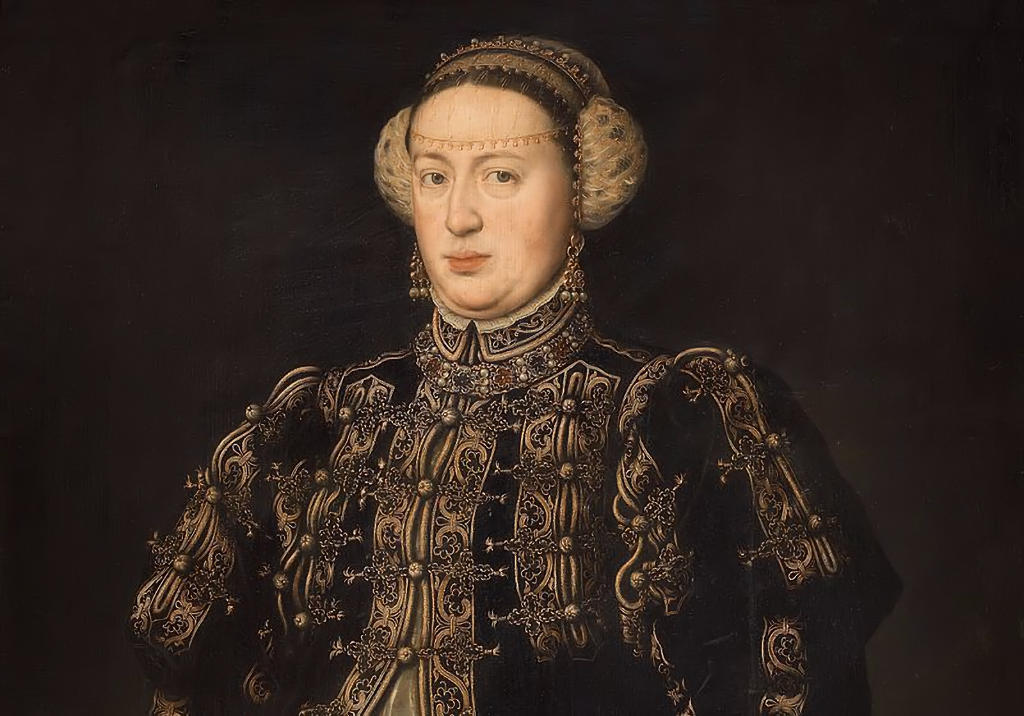It was not until February 10, 1525, when Catherine was 18 years old, that she entered into a marriage that would significantly shape her life and influence in Portugal. She married her first cousin, King John III of Portugal, at the behest of her mother, Joanna I of Castile. This union resulted in nine children, although only two survived early childhood. Catherine's devotion to her family extended beyond motherhood. She emphasized the importance of education, amassing an extensive library and establishing a vibrant intellectual salon within the royal court. Notably, Catherine welcomed women scholars into her household, fostering an environment of learning and cultural exchange. Figures such as Joana Vaz, Públia Hortênsia de Castro, and Luisa Sigea de Velasco contributed to the intellectual growth of Catherine's family, including her daughter Princess Maria and her niece, also named Maria.
The year 1557 brought immense changes to Catherine's life and her role in Portuguese politics. With the passing of her husband, King John III, Catherine found herself at the center of a power struggle. Her daughter-in-law and niece, Joanna of Austria, challenged Catherine's authority as regent for her infant grandson, King Sebastian. The situation escalated to involve Charles V, Catherine's brother and a powerful figure in Europe. Through Charles V's mediation, Catherine emerged as the rightful regent, surpassing the claims of her daughter Joan, who was required in Spain due to the absence of Philip II.
Catherine's regency spanned from 1557 to 1562, during which she exhibited strong leadership and diplomatic skills. However, she eventually transferred the regency to Henry of Portugal, marking a significant transition in the governance of the kingdom.
Beyond her political endeavors, Catherine of Austria possessed a deep passion for art and culture. Notably, she amassed one of the earliest and most exceptional collections of Chinese porcelain in Europe. Her dual role as the youngest sister of Emperor Charles V and the Queen of Portugal afforded her access to exquisite treasures from Asia, which regularly arrived in Lisbon to adorn the royal palace and enhance her personal collection. Catherine's collection became renowned as the first kunstkammer (cabinet of curiosities) on the Iberian Peninsula, reflecting her power and refined taste.
Lisbon.vip Recommends
Catherine of Austria, Queen of Portugal, left an indelible mark on the history and culture of the country. Her commitment to education, exemplified by her patronage of women scholars, created an environment that fostered intellectual growth within the royal court. Her role as regent during a tumultuous period solidified her position as a capable and respected leader.
Moreover, Catherine's passion for art and her extensive collection of Chinese porcelain showcased her refined taste and contributed to the cultural richness of Portugal. Her influence as a collector helped shape the European perception of exotic goods and their integration into artistic and decorative practices.
On February 12, 1578, Catherine of Austria passed away, leaving a lasting legacy as a prominent queen, regent, and patron of the arts. Her contributions to Portuguese history endure as a testament to her power, education, and love for the cultural treasures she gathered throughout her lifetime.



